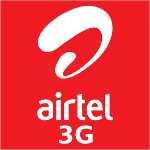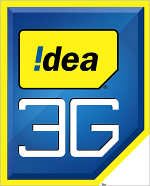Last year Tata Docomo was the first private operator to launch 3G services in India and others joined the bandwagon after that. But the spread of 3G is still too slow and many regions of India still await services. However, mobile subscribers of Airtel, Vodafone and Idea need not be disappointed as the three are working with each other to have nationwide presence through intra circle Roaming agreements.
Sharing their views on inter and intra circle roaming, Vodafone and Airtel spokespersons said, “Roaming agreements – both inter and intra circle – are the norm in the Indian telecom industry since they help a service provider to provide seamless service to its customers. Airtel has entered into a bilateral roaming agreement, both inter and intra circle, with Vodafone and Idea to provide 3G services to our customers in the circles where we have not built our own 3G network. With this agreement in place, Airtel will bring a pan-India experience of 3G services to its customers.”
Vodafone
 Vodafone is offering 3G services in 49 towns and cities of Andhra Pradesh to its subscribers using Idea’s network. In Kerala too it is using the service provider’s network for offering 3G.
Vodafone is offering 3G services in 49 towns and cities of Andhra Pradesh to its subscribers using Idea’s network. In Kerala too it is using the service provider’s network for offering 3G.
The tariff plan provided by Vodafone in these circles is quite affordable despite being made available through a rival network. In Kerala, a Vodafone prepaid customer can avail 50 MB of 3G data for Rs 26 a day. Rs 101 gives 200 MB for 30 days, and 1 GB of data over three days comes for Rs 375. For postpaid customers only plans that cost Rs 100 and Rs 375 are also available.
In Andhra Pradesh, Vodafone users can experience 3G at no extra cost over and above their current 2G data charges, but the catch is that these special data offers are valid only till the end of July after which regular tariff is implemented.
Airtel
 Similarly, Bharti Airtel has entered an intra-circle roaming agreement with Idea to offer 3G services in Gujarat. Its tariff plans are the same as those it offers in circles where it has its own network.
Similarly, Bharti Airtel has entered an intra-circle roaming agreement with Idea to offer 3G services in Gujarat. Its tariff plans are the same as those it offers in circles where it has its own network.
Basic plans start at Rs 8, which gets you 10 MB for a day and Rs 61 for 65 MB over three days. Standard plans start at Rs 101, which gives 100 MB for 30 days, and go up to Rs 750 for 2 GB of data over one month.
While a FlexiShield plan is also available with 1.25 GB of data at 3G speeds and 2 paise for 100 KB thereafter till you reach a maximum bill of Rs 2,000. Once you have reached this cap you can access unlimited data but at a reduced speed of 20 Kbps.
Idea
 On the other hand, Idea is offering 3G services in Delhi and Kolkata using Vodafone’s network because it has no spectrum in these cities. Idea’s subscribers can avail 3G in the two metros using sachet or regular plans.
On the other hand, Idea is offering 3G services in Delhi and Kolkata using Vodafone’s network because it has no spectrum in these cities. Idea’s subscribers can avail 3G in the two metros using sachet or regular plans.
The sachet plan is same for Delhi and Kolkata subscribers. Users can get 20 MB of data at Rs 7, while Rs 52 will buy 100 MB of 3G data for three days. Extra usage will be charged at 5 paise for 10 KB in all the plans.
Apart from that, Idea prepaid customers in Delhi can also buy 200 MB of data for Rs 102, while Rs 100 will get 100 MB if you are postpaid customer. Rs 1,250 is the highest plan value which gives 10 GB of data for a month for both prepaid and postpaid users.
For Idea’s prepaid subscribers in Kolkata, on the other hand, the choice is limited to only one usage based plan for Rs 103 per 200 MB of data, but postpaid users have more choice than their counterparts in Delhi with maximum plan value going up to Rs 5,000 for 30 GB of data.
An interesting trend in the offering by Airtel, Vodafone and Idea is that Vodafone, in a bid to promote 3G services, is offering services at a rate, which is subsidised relative to that offered by the other two operators for the initial period of two months.
We hope these partnerships will also provide frequent travelers an opportunity to be connected through 3G even while traveling. None of the operators have a nationwide 3G license so these agreements become important in having a countrywide network so that people can roam freely across the country and yet connect through a high speed network.



 Vodafone is offering 3G services in 49 towns and cities of Andhra Pradesh to its subscribers using Idea’s network. In Kerala too it is using the service provider’s network for offering 3G.
Vodafone is offering 3G services in 49 towns and cities of Andhra Pradesh to its subscribers using Idea’s network. In Kerala too it is using the service provider’s network for offering 3G. Similarly, Bharti Airtel has entered an intra-circle roaming agreement with Idea to offer 3G services in Gujarat. Its tariff plans are the same as those it offers in circles where it has its own network.
Similarly, Bharti Airtel has entered an intra-circle roaming agreement with Idea to offer 3G services in Gujarat. Its tariff plans are the same as those it offers in circles where it has its own network. On the other hand, Idea is offering 3G services in Delhi and Kolkata using Vodafone’s network because it has no spectrum in these cities. Idea’s subscribers can avail 3G in the two metros using sachet or regular plans.
On the other hand, Idea is offering 3G services in Delhi and Kolkata using Vodafone’s network because it has no spectrum in these cities. Idea’s subscribers can avail 3G in the two metros using sachet or regular plans.
 While traveling by a vehicle users can also add its registration number in the application and that too is sent to registered numbers in times of need.
While traveling by a vehicle users can also add its registration number in the application and that too is sent to registered numbers in times of need. With such a solution, it is easier still for companies to track the status and movements of their employees, especially female employees who work late night shifts in organisations like BPOs.
With such a solution, it is easier still for companies to track the status and movements of their employees, especially female employees who work late night shifts in organisations like BPOs.